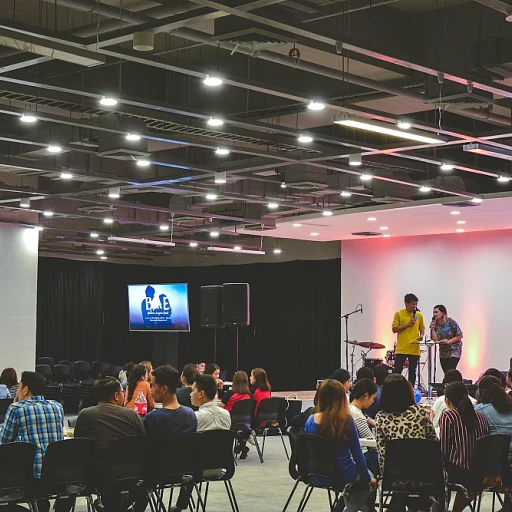
Overview of Washington State Lunch Break Laws
Exploring Lunch Break Regulations
In Washington State, labor laws mandate specific meal and rest break requirements for employees. Under the Washington break regulations, employees are entitled to a meal break of at least 30 minutes if they work more than five hours. This meal period must be unpaid only if the employee is completely relieved of their duties during this time. For those who work shifts exceeding three hours, employers must provide rest breaks lasting 10 minutes for every four hours worked.
Employers are required to implement and communicate these regulations effectively, ensuring that meal periods and rest breaks are observed without compromising work efficiency. These break laws align with federal guidelines but include specific stipulations unique to Washington, ensuring the rights of workers are maintained and respected.
Many challenges exist for employers in implementing these regulations. They must balance compliance with operational needs, ensure that lunch breaks are systematic, and manage the logistical aspects of ensuring adequate coverage during these breaks.
For a detailed understanding of time-off policies and how they relate to work hours, see our article on the differences between DTO and PTO in HR communication.
The Role of Human Resources in Communicating Break Policies
Facilitating Clarity in Break Schedule Communications
In Washington State, where labor laws are inherent to ensuring fair work conditions, the role of Human Resources in articulating break policies becomes crucial. The complex blend of federal and state regulations on meal and rest breaks requires HR departments to serve as the vital conduit of communication between employers and employees.
For every employer, the obligation to communicate clear, compliant information about lunch break laws is paramount. These laws mandate specific break times within the work period, particularly for certain roles or industries. For instance, meal breaks and rest breaks are governed differently depending on the hours worked, with some employers required to provide a certain number of minutes for breaks based on the work hours.
HR professionals need to craft messaging that ensures employees fully understand their entitlements under Washington’s break laws and meal periods. It is their responsibility to communicate this through effective channels, which might include an employee handbook or digital communication platforms. Guidance on such communications can be further explored in resources like how to write a confirmation letter for employee status in your company, providing insights into formalizing policies.
Moreover, clear communication regarding breaks fosters trust and compliance. It is important not only to focus on announcing break periods but also on educating employees on their rights and outlining expectations for both employers and employees regarding compliance with washington state regulations. This practice not only adheres to labor laws but also works towards optimizing workforce morale and retention, as it demonstrates a commitment to workers’ welfare.
Challenges in Implementing Lunch Break Laws
Addressing Implementation Challenges
Implementing lunch break laws in Washington State presents certain challenges for both human resources departments and employers. Despite clear guidelines on meal breaks and rest periods outlined by labor laws, various hurdles arise during practical application. Understanding these challenges can aid HR professionals in devising effective strategies for compliance.- Cultural Variations: One of the prevalent challenges is the cultural mindset within organizations. Sometimes, the work culture implicitly discourages employees from taking full advantage of their break entitlements. While laws do mandate adequate time for rest breaks and meal periods, a culture that prioritizes continuous productivity over employee welfare can lead to issues in implementation.
- Communication Gaps: Another significant hurdle is ineffective communication of break policies by employers. Without clear communication from HR regarding what Washington State's break laws entail, employees may not be aware of their right to a meal or rest break. It's essential that employers provide comprehensive information about what is legally required, including specific details on paid meal break durations and rest breaks.
- Operational Constraints: Businesses operating in fast-paced environments might face logistical challenges in scheduling appropriate break times for all workers. Ensuring compliance with labor laws while maintaining efficient operations requires innovative scheduling solutions and employee cooperation. Properly trained HR units are crucial in coordinating these efforts to balance organizational needs with legal obligations.
- Reluctance to Report Violations: Employees may feel hesitant to report violations of break policies due to fear of retaliation. HR departments must work to foster a culture of trust where workers feel safe in raising concerns, supported by mechanisms that allow for the anonymous reporting and resolution of issues.
Best Practices for HR Communication on Break Policies
Effective HR Practices for Communicating Workplace Rest Policies
To ensure compliance with break and meal laws, it is imperative that employers communicate their break policies effectively to employees. Proper communication fosters not only adherence to Washington State labor laws but also enhances employee satisfaction and productivity.- Clarity and Accessibility: Employers should provide clear and accessible documentation outlining break policies. This includes written materials that specify when breaks should occur, the duration of rest breaks, and how these policies align with state regulations. Disseminating this information through company handbooks, internal websites, and HR portals ensures that all employees have easy access.
- Regular Training Sessions: Conducting regular training sessions can help reinforce the importance of adhering to the break and meal periods outlined by Washington State law. These sessions can be integrated into onboarding programs or scheduled periodically to refresh employees' understanding.
- Automated Reminders: Utilizing technology to set up automated reminders can help maintain consistency in break times. This strategy is particularly useful in environments where work hours fluctuate, ensuring that employees remember to take their mandated breaks without disrupting workflow.
- Feedback Mechanisms: Establish communication channels where employees can express concerns or ask questions about break policies. An open-door policy or designated HR contacts can facilitate better dialogue and adjustment of policies as needed.
- Compliance Audits: Regular audits of break law compliance can help employers identify areas needing improvement. Analyzing data from timesheets and work period logs ensures that rest breaks and meal breaks are being granted as per legal requirements.
Case Studies: Successful HR Communication on Lunch Breaks
Examples of Effective Communication Strategies
Employers in Washington State have implemented successful strategies to enhance communication regarding lunch break regulations and policies. These strategies focus on ensuring that employees clearly understand their rights and break entitlements. Here are notable examples:- Clear Documentation: Successful employers provide comprehensive documentation outlining break policies. This includes precise details on meal breaks and rest breaks, the duration of these periods, and how they align with state laws. Ensuring that employees have easy access to these documents is key to effective communication.
- Regular Training Sessions: Hosting regular workshops and training sessions helps reinforce understanding among employees, ensuring they are aware of their entitlements under Washington state labor laws. These sessions often cover federal law considerations alongside state-specific mandates.
- Open Communication Channels: Employers who maintain open lines of communication, such as dedicated email addresses or HR hotlines, enable employees to have direct access to HR support. This allows workers to seek clarifications about their entitlements and report non-compliance discreetly.
- Interactive Digital Platforms: Utilizing digital platforms that encourage employee interaction and feedback has proven effective. These platforms often include forums or chat systems where employees can discuss break policies, share concerns, and receive timely updates.












